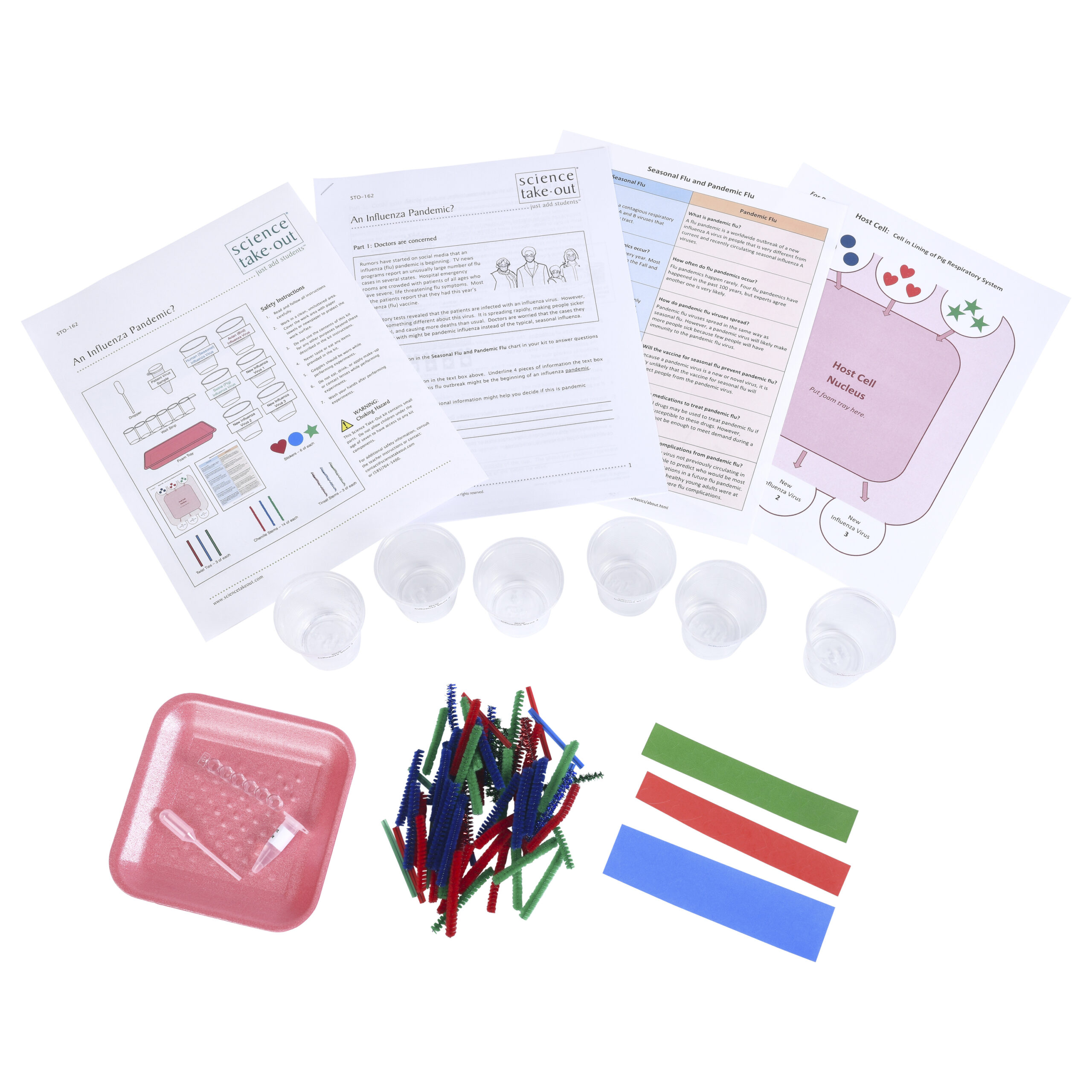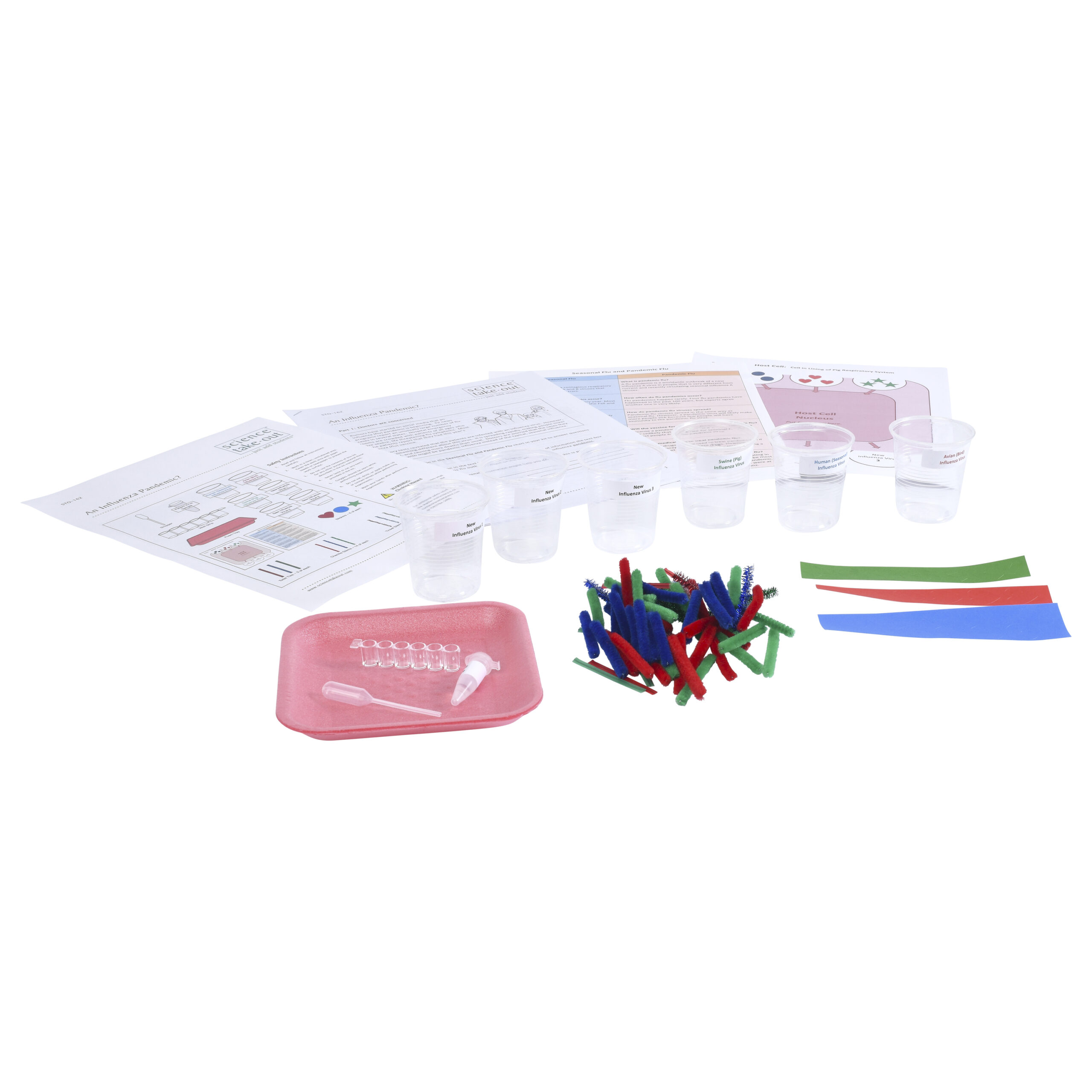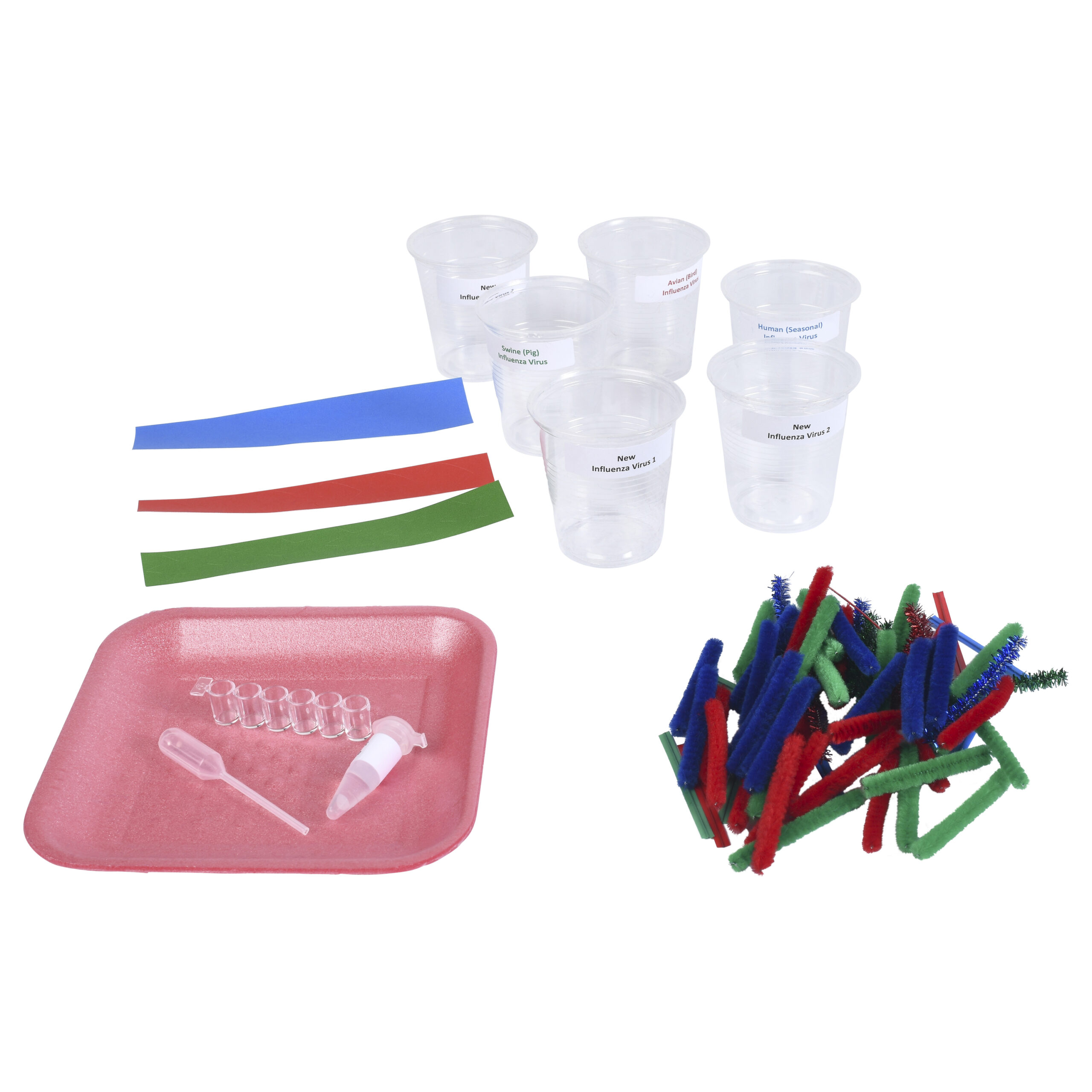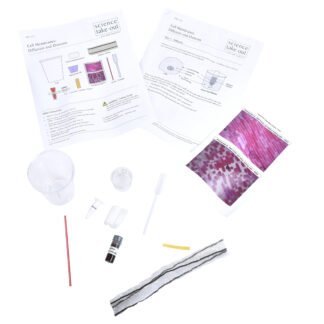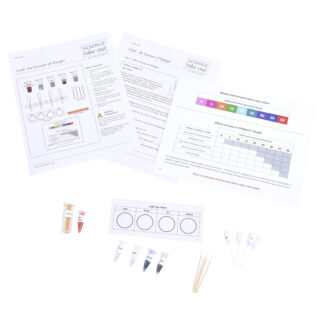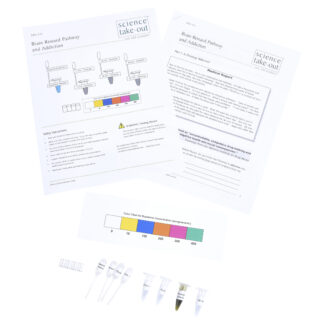An Influenza Pandemic?
$20.95 – $161.95Price range: $20.95 through $161.95
Quantity Discounts Available! →
Is the outbreak seasonal influenza or pandemic influenza?
Follow a fictitious scenario about an influenza outbreak.
- Conduct simulated lab tests to determine if the outbreak is caused by a novel virus.
- Determine if this outbreak is seasonal flu or pandemic flu.
- Use models to explain how mixing of genes from birds, pigs, and humans could produce a pandemic virus.
- Explain why current vaccine production technologies will be inadequate if pandemic influenza occurs.
Kit Includes
- Seasonal Flu and Pandemic Flu chart
- Patient Virus Sample (simulated)
- Dropper
- Well strip
- Host Cell diagram
- Foam tray (host cell nucleus)
- Plastic cups (virus capsids)
- Chenille stems, tinsel stems, and twist-ties (viral RNA)
- Colored stickers (viral antigens)
Quantity Discounts
Kits:
- 1 – 9 kits: $20.95 each
- 10 – 24 kits: $19.90 each
- 25+ kits: $18.86 each
Unassembled:
- 1 – 9 packs: $161.95 each
- 10+ packs: $153.85 each
Refills:
- 1 – 9 packs: $42.95 each
- 10+ packs: $40.80 each
Correlation to Next Generation Science Standards (NGSS) Shop by NGSS »
Performance Expectations:
HS-LS1-1. Construct an explanation based on evidence for how the structure of DNA determines the structure of proteins, which carry out the essential functions of life through systems of specialized cells.
HS-LS1-2. Develop and use a model to illustrate the hierarchical organization of interacting systems that provide specific functions within multicellular organisms.
Science & Engineering Practices
Developing and Using Models - Develop, revise, and/or use a model based on evidence to illustrate and/or predict the relationships between systems or between components of a system.
Analyzing and Interpreting Data - Evaluate the impact of new data on a working explanation and/or model of a proposed process or system.
Constructing Explanations - Apply scientific reasoning, theory, and/or models to link evidence to the claims to assess the extent to which the reasoning and data support the explanation or conclusion.
Disciplinary Core Ideas
LS1.A: Structure and Function - Systems of specialized cells within organisms help them perform the essential functions of life.
- All cells contain genetic information in the form of DNA molecules. Genes are regions in the DNA that contain the instructions that code for the formation of proteins, which carry out most of the work of cells.
Crosscutting Concepts
Structure and Function - The functions and properties of natural and designed objects and systems can be inferred from their overall structure, the way their components are shaped and used, and the molecular substructures of its various materials.
